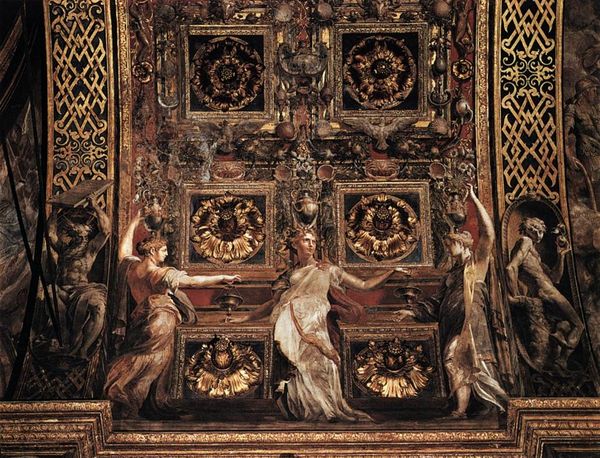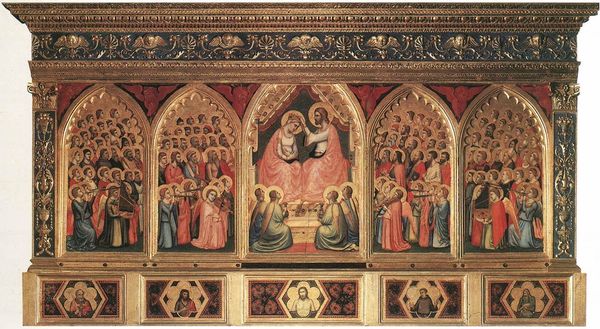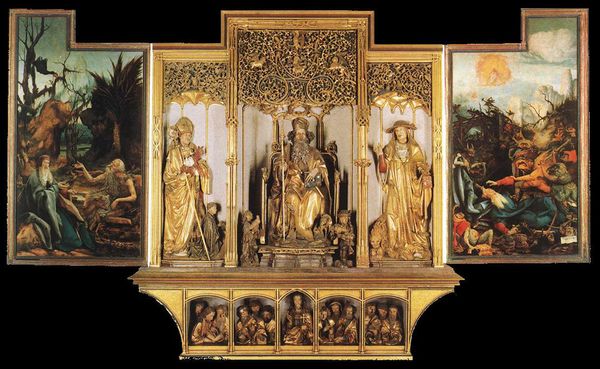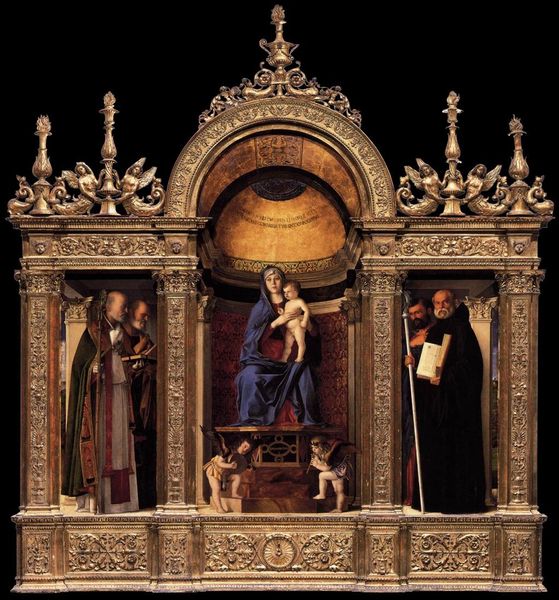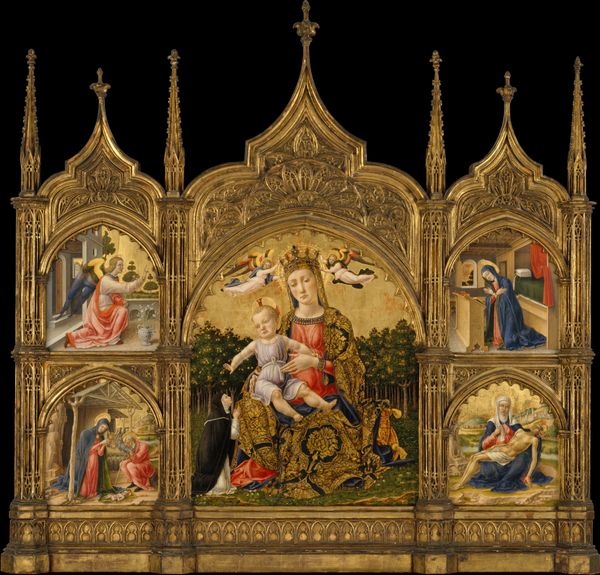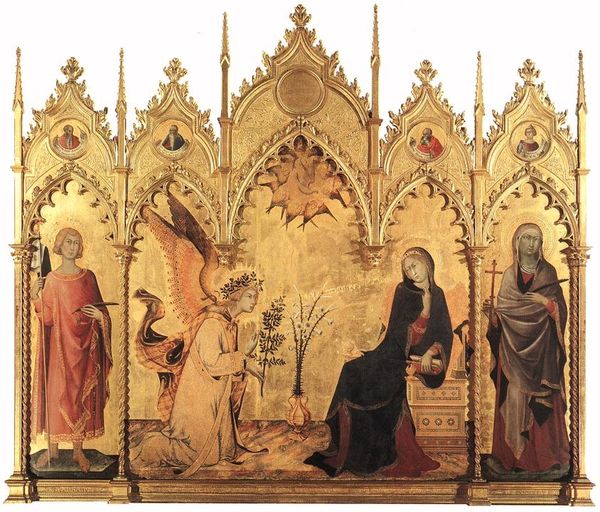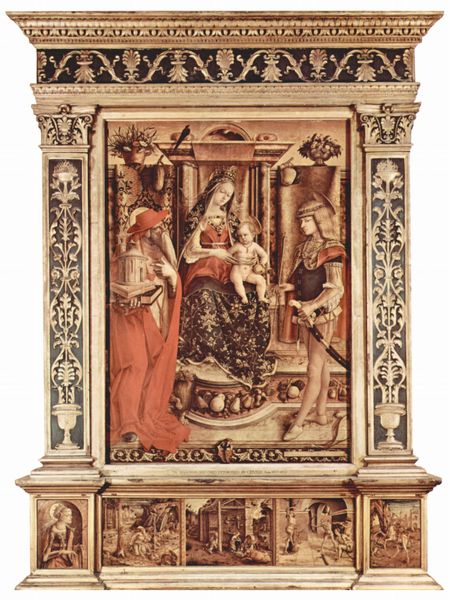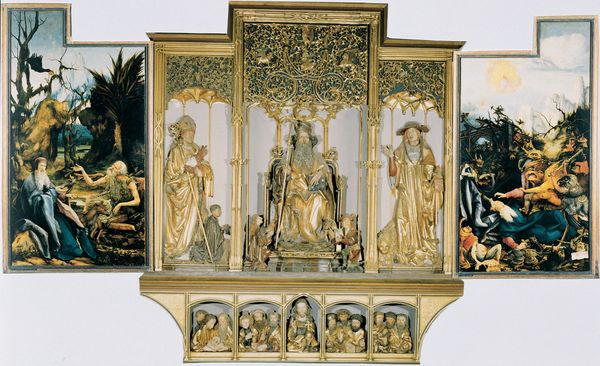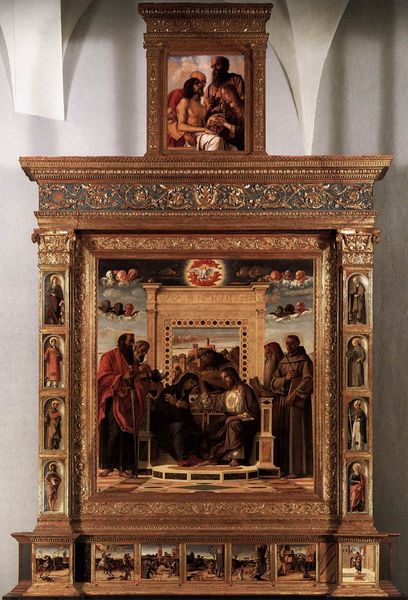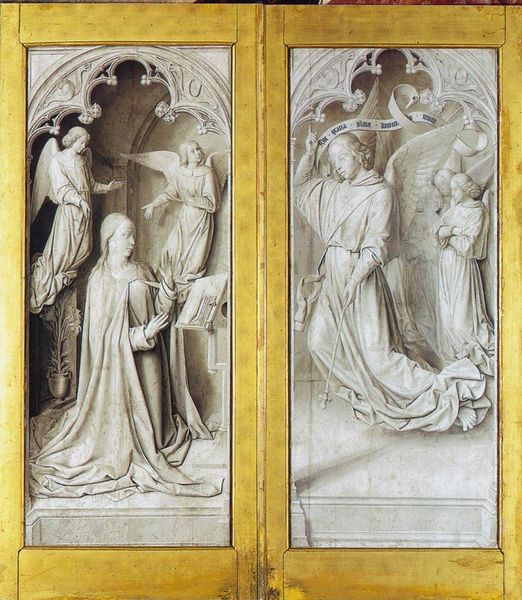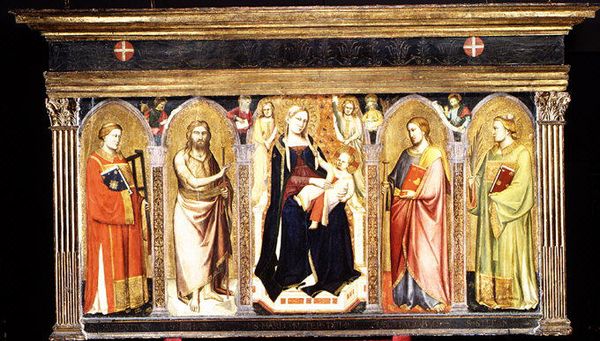
St. Ursula Shrine: Medallions 1489
0:00
0:00
hansmemling
Memling Museum (Old St. John's Hospital), Bruges, Belgium
panel, carving, tempera, painting, sculpture
#
medieval
#
panel
#
carving
#
tempera
#
painting
#
sculpture
#
gothic
#
holy-places
#
sculptural image
#
historic architecture
#
traditional architecture
#
sculpture
#
history-painting
#
northern-renaissance
#
historical building
#
statue
Dimensions: 87 x 91 cm
Copyright: Public domain
Curator: Let's explore this detail from Hans Memling's "St. Ursula Shrine: Medallions," completed in 1489. It is a beautiful example of late Gothic and early Northern Renaissance artistry, using tempera on carved panel. Editor: It strikes me as exquisitely crafted, with an incredible sense of detail, almost overwhelmingly intricate. The colors seem muted, reverent, enhancing a feeling of sacred mystery. Curator: Indeed. Memling achieves this effect through meticulous application of tempera and oil glazes. Let's examine how each of the roundels is composed. On either side, angels are captured in the smaller format. Editor: Right, but let’s look at what these figures may have meant for its contemporary audience. We see musician angels, not warriors. Their song signifies triumph over the pagan, sensual pleasures defeated by Saint Ursula's faith. What might sound signals to its beholders? Curator: Very insightful. Note, too, how the complex, repeating foliate patterns framing the medallion paintings function formally. Each small curve is a part of the whole pattern in perfect orchestration. These smaller forms are placed so tightly against one another and work to frame these angelic and sacred figures in an impactful way. Editor: Precisely! In this context, music becomes symbolic, evoking the idea of angelic glory, rather than a carnal festivity, to remind the audience of the spiritual bliss to await in the afterlife if they remained faithful to the Church. But that intricate wooden pattern has to also point to earthly luxury. Curator: Agreed. The elaborate gold carvings demonstrate considerable technical skill, reinforcing the opulence befitting the shrine's purpose. What’s captivating is Memling's restraint within these frames, in which the compositions do not vie for attention within its architectural setting, but rather invite contemplative pauses, a formal function essential to devotional experiences. Editor: So it’s an artwork built on both material preciousness, and profound emotional weight. Curator: Ultimately, yes. Its impact emerges not just from individual motifs but from the sophisticated arrangement of material and symbol within the devotional space. Editor: That is, both sonic associations and decorative, repeating ornament amplified spiritual aspiration.
Comments
No comments
Be the first to comment and join the conversation on the ultimate creative platform.
